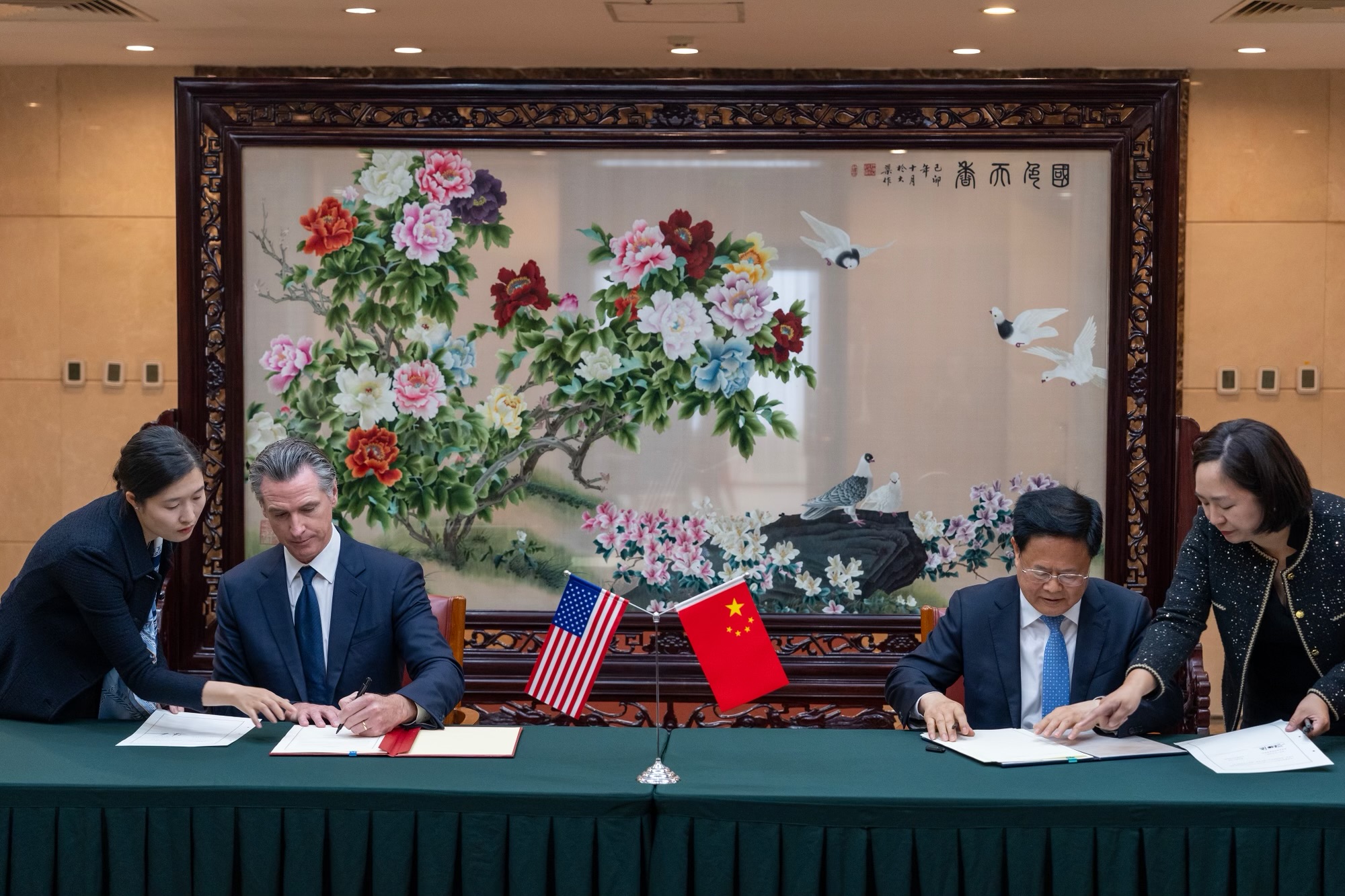WHAT YOU NEED TO KNOW: Governor Newsom met with Chinese President Xi Jinping and other high-level Chinese officials to discuss climate action, economic development, cultural exchange, human rights concerns, and democracy.
BEIJING – On Wednesday, Governor Gavin Newsom met with President Xi Jinping in China’s capital city of Beijing. The Governor also met Wednesday with Foreign Minister Wang Yi and Vice President Han Zheng and signed a new climate-focused Memorandum of Understanding (MOU) with the National Development and Reform Commission Chairman Zheng Shanjie. The Governor was joined by U.S. Ambassador to China Nicholas Burns for the series of discussions.
Governor Newsom was the first governor to be in China in more than four years, and the first to meet with President Xi since former Governor Brown in 2017. Following the Governor’s day of meetings, California and China highlighted outcomes from the discussions entitled the “Declaration of Enhanced Subnational Climate Action and Cooperation Between the State of California and the People’s Republic of China.”
Downloadable high-res photos are available here.
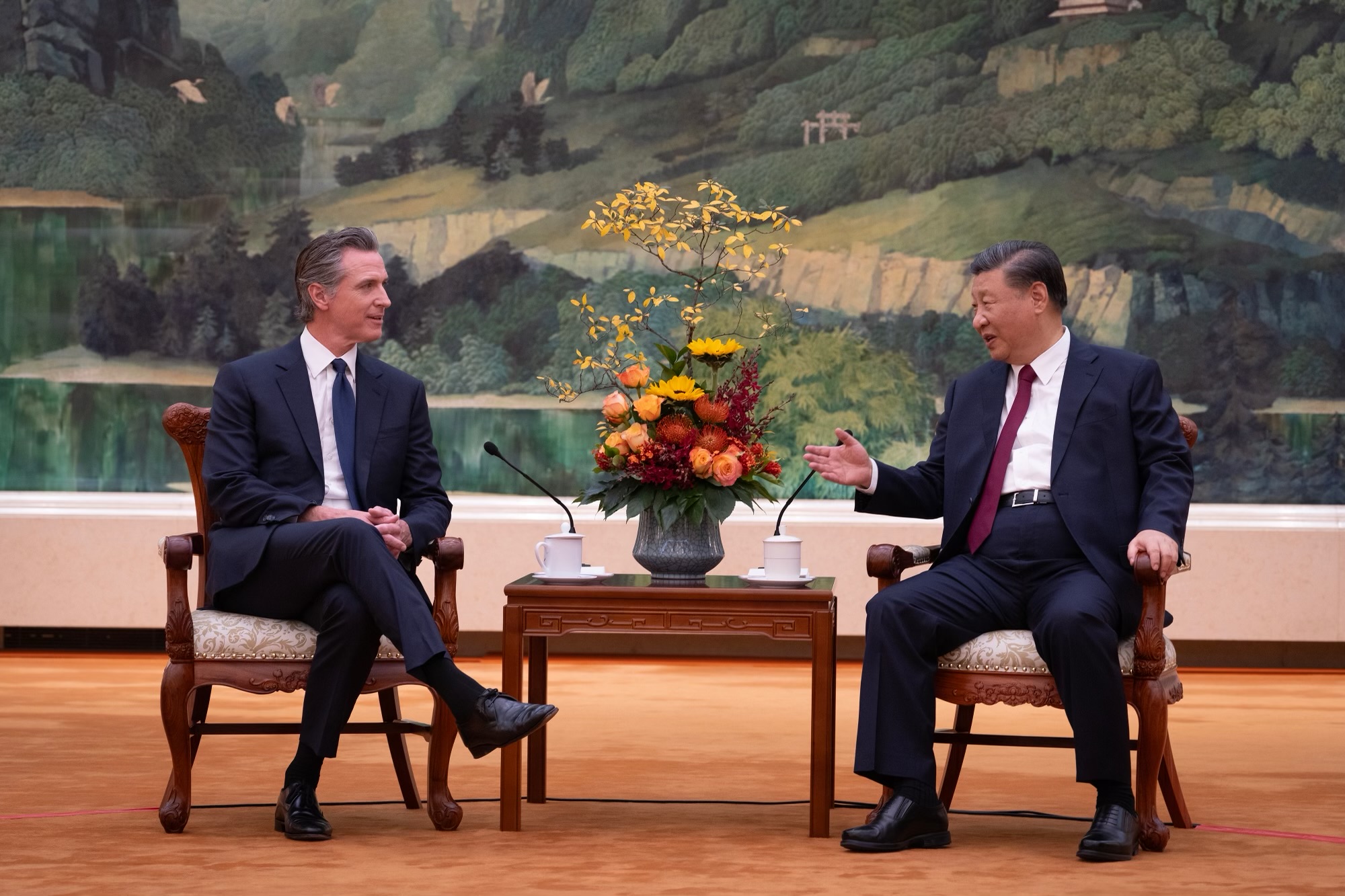
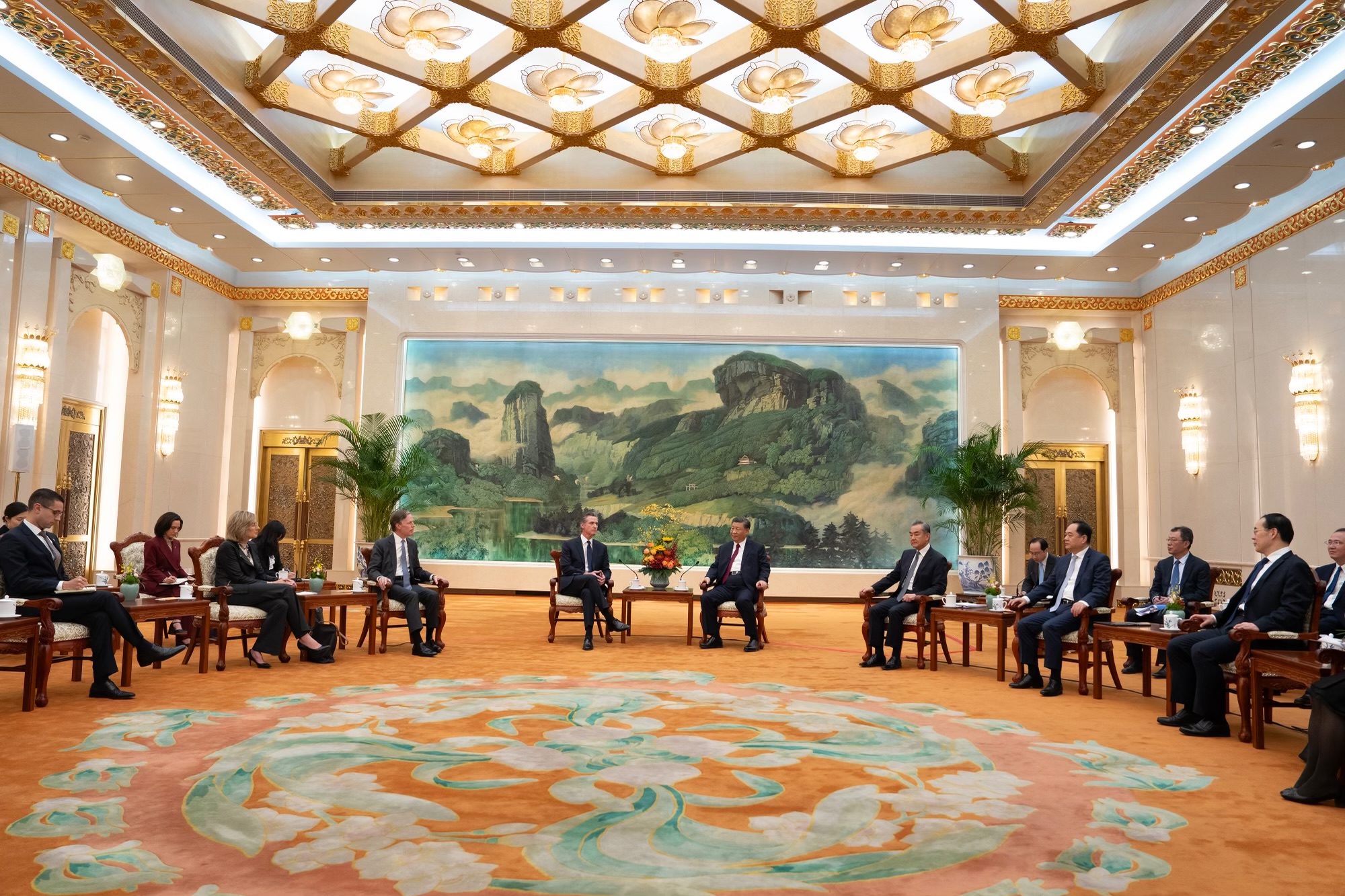
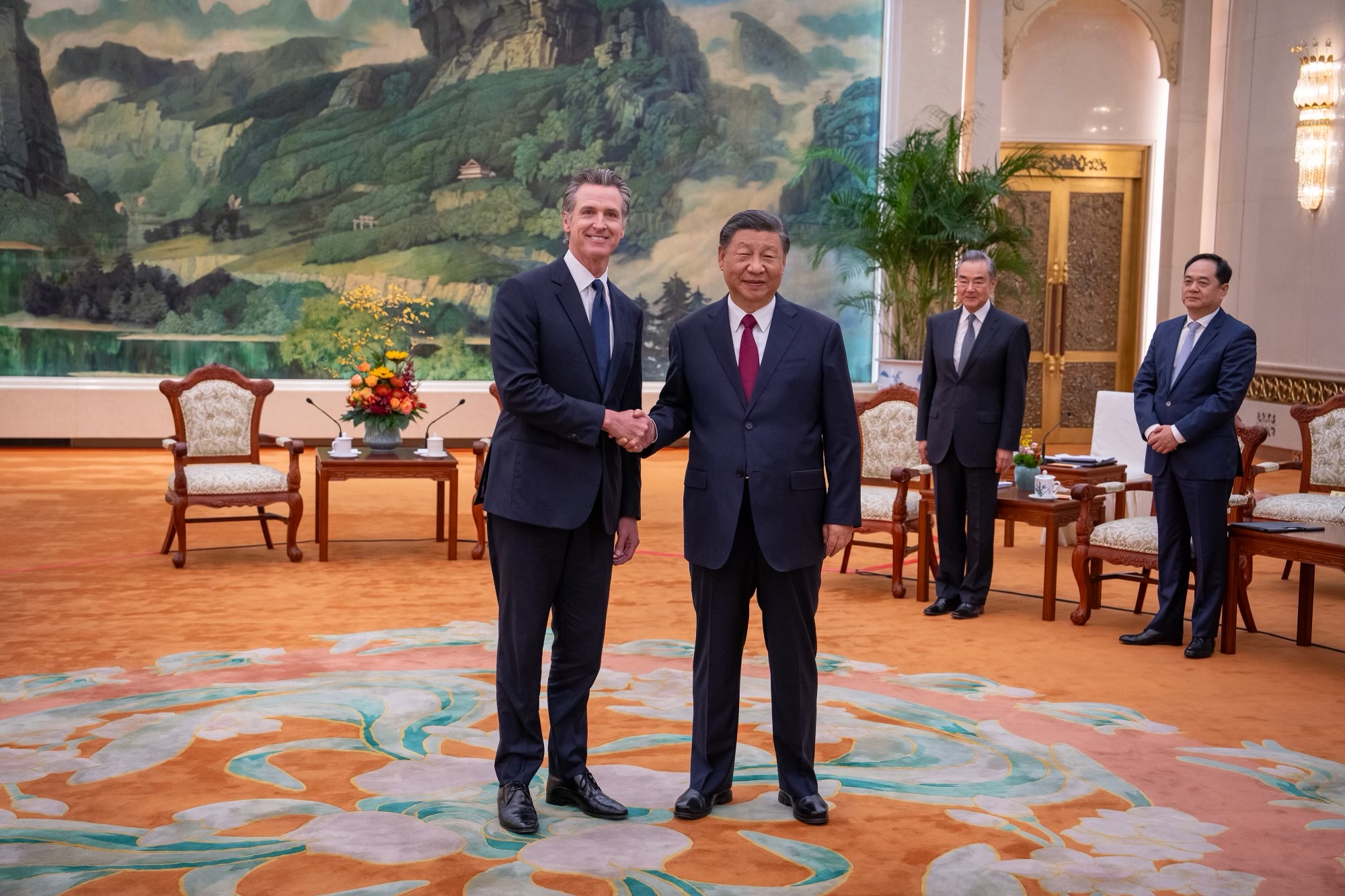
Throughout his meetings, Governor Newsom discussed how California and China can continue working together to advance climate action, promote economic development and tourism, and strengthen cultural ties. The Governor reiterated California’s commitment to serving as a reliable partner on the climate crisis, and how critical China remains in the world’s efforts to reduce pollution. He emphasized the continued need for open lines of communication and extended California’s warm welcome for the Asia-Pacific Economic Cooperation (APEC) summit in San Francisco next month.
Following the day’s meetings, Ambassador Burns said: “This was a very positive and consequential day for the United States.”
Governor Newsom’s topics of discussion also included human rights violations and anti-democratic efforts in Hong Kong, Tibet, Xinjiang and Taiwan, as well as David Lin, a California pastor who has been imprisoned in China since 2006. The Governor discussed his visit to the Middle East and how China can play a role in diffusing tension in the region.
“Divorce is not an option. The only way we can solve the climate crisis is to continue our long-standing cooperation with China. As two of the world’s largest economies, the work we do together is felt in countless communities on both sides of the Pacific.
Despite major differences, we share our humanity – our desire to feel protected, connected and respected is universal – and that humanity is what should drive us to work together to stop the greatest existential threat our planet has ever known.
Addressing climate change can be the bridge we’ve been missing. I made it clear to Chinese leaders that California will remain a stable, strong, and reliable partner, particularly on low-carbon, green growth.”
Governor Gavin Newsom
CLIMATE CHANGE
On climate, Governor Newsom expressed his desire for continued collaboration and partnership because there is no solving the climate crisis without China – the world’s largest emitter. The Governor made clear with Chinese leaders that we must take urgent action to transition away from fossil fuels. He emphasized that California is on the frontlines of the climate crisis – from devastating flooding to historic wildfires – and that the urgency of the crisis means we should increase our climate ambition, including striving to meet our carbon neutrality goals earlier.
The Governor also pointed to California’s clean energy transition as a proof point that climate action spurs economic growth – repeatedly pointing out that California now has six times as many clean energy jobs as fossil fuel jobs, driving the world’s 5th-largest economy. Governor Newsom and his Chinese colleagues all stressed that subnational leadership is vital to global climate action, including on ZEVs and methane.
ECONOMIC TIES
Throughout the meetings, the Governor also discussed ways to strengthen the $166 billion two-way trade relationship between California and China that continues to create thousands of jobs and provide wages for countless families. He made clear that foreign investments must continue to be predicated on fair competition. Even though the strong trade partnership has weathered the pandemic, direct flights between California and China are just 15% of pre-COVID-19 levels and billions less are flowing to tourism as a result – and intercultural exchanges have suffered.
Governor Newsom and Chinese leaders discussed ways to bring back tourism and increase flights between California and China, while Chinese officials shared a desire to double the number of direct flights from China to the United States by the end of this calendar year. In addition, Governor Newsom raised the importance of maintaining open lines of communication and commerce in key California industries, notably high-tech innovation and agriculture.
CULTURAL EXCHANGE
The Governor highlighted the importance of the people-to-people cultural exchange, citing the rise in xenophobia and anti-Chinese rhetoric since the COVID-19 pandemic. Governor Newsom emphasized the path forward is through people-to-people relationships, cultural respect and understanding.
OTHER ISSUES
While most of the discussions centered around China and California’s climate partnership and economic ties, Governor Newsom also raised a number of other issues.
The Governor and his Chinese counterparts touched on a variety of human rights issues including Hong Kong, Tibet, Xinjiang and Taiwan, as well as David Lin, a California pastor who has been imprisoned in China since 2006.
The Governor also discussed the high-priority issue of the fentanyl crisis and China’s role in combating the transnational shipping of precursor chemicals.
He also discussed California’s long history of subnational relationships with the Chinese national government and its provinces and cities – and the importance of these relationships to help strengthen U.S.-China relations.
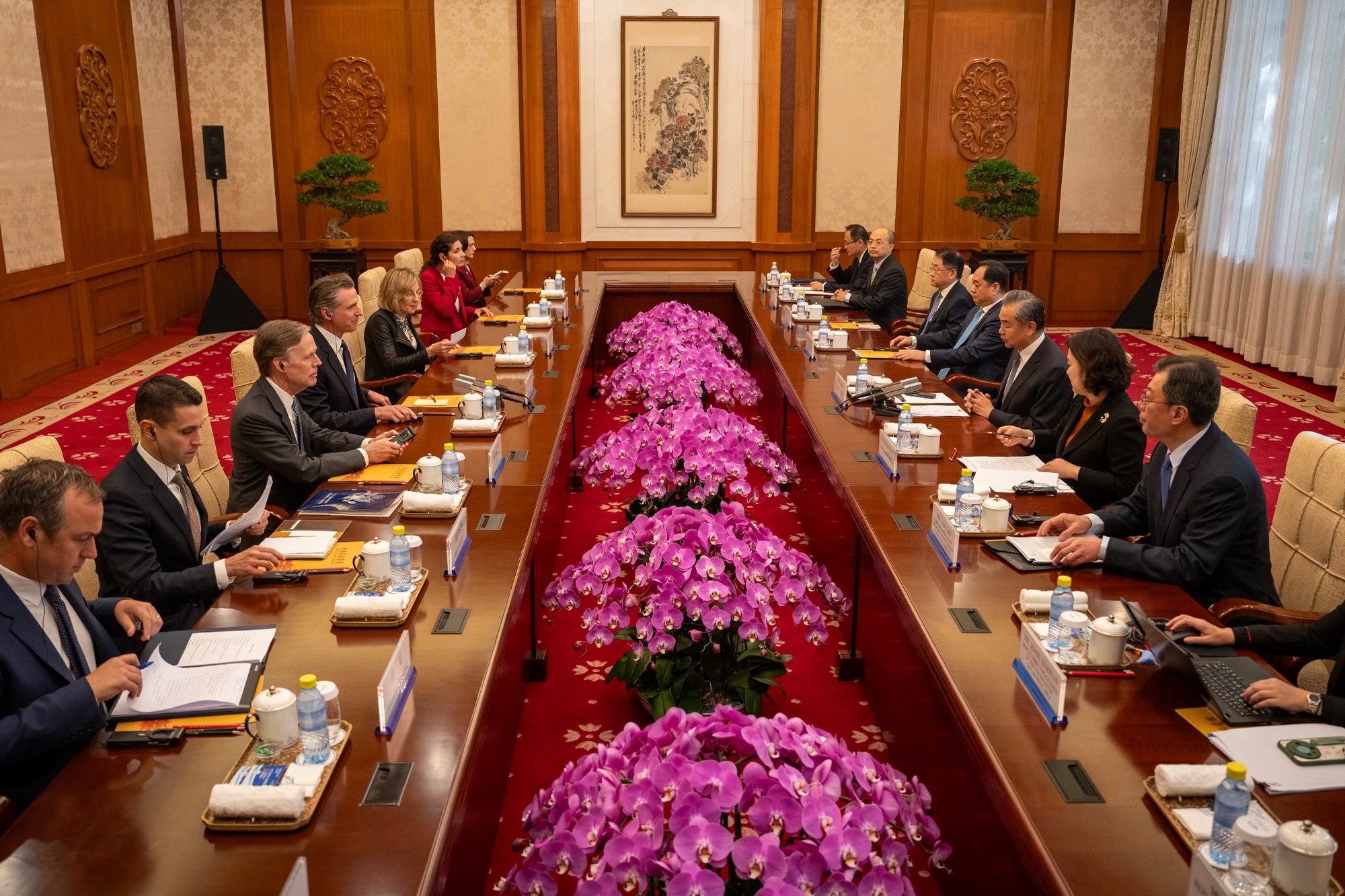
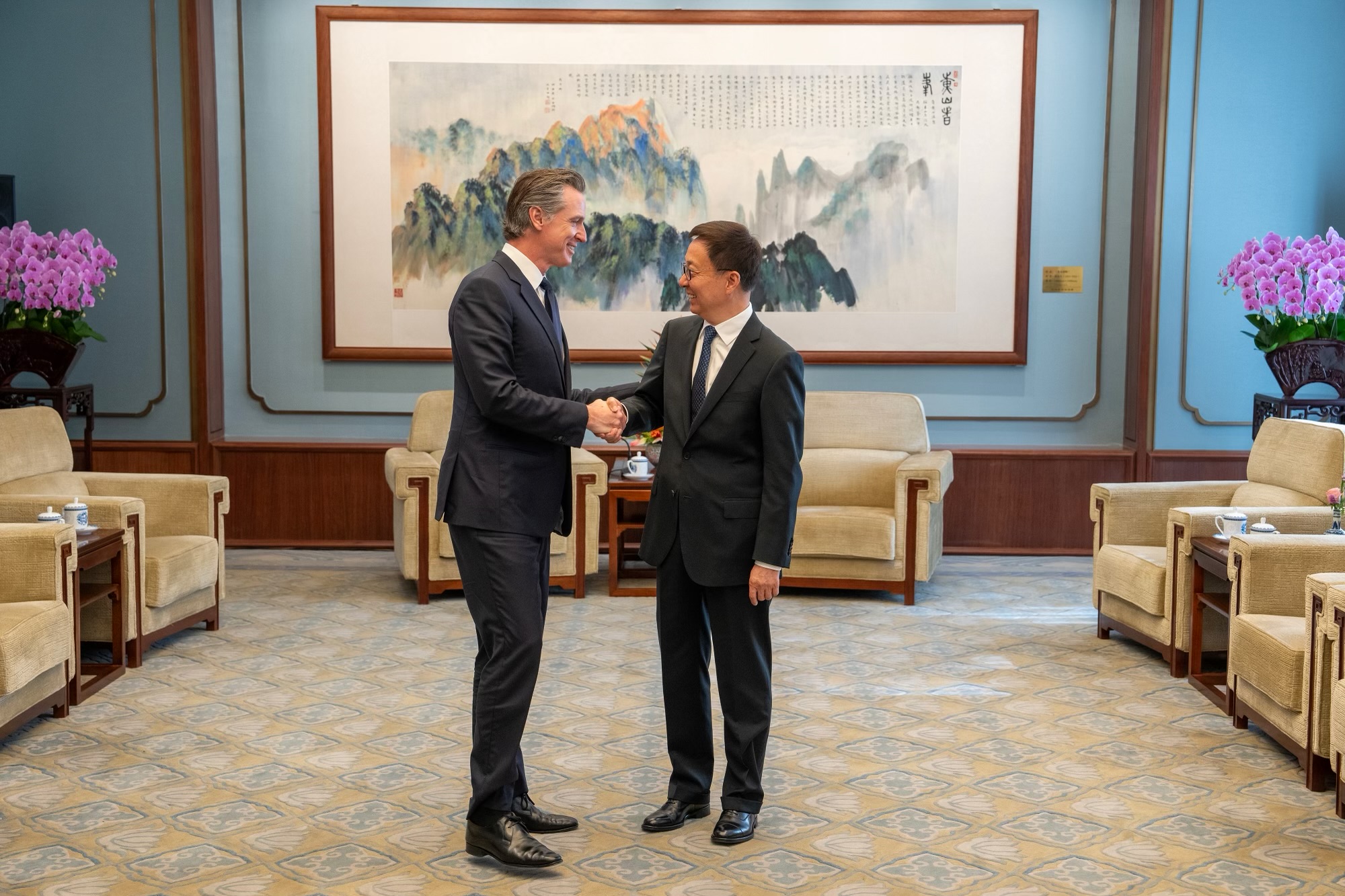
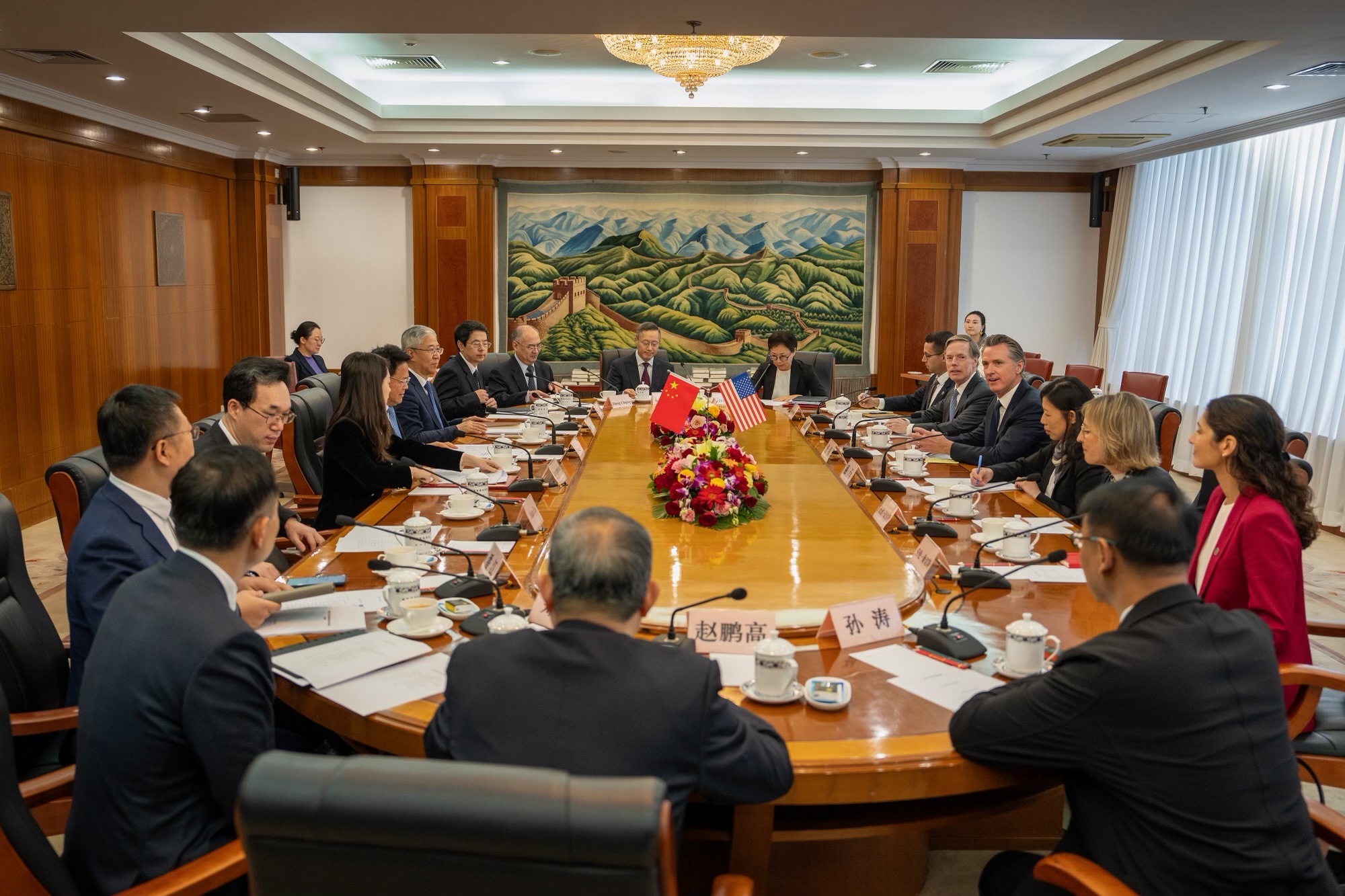
MOU WITH NATIONAL DEVELOPMENT AND REFORM COMMISSION
Also Wednesday, Governor Newsom met with Chairman Zheng Shanjie from the National Development and Reform Commission – China’s macroeconomic central planning agency. Governor Newsom and Chairman Zheng signed a Memorandum of Understanding (MOU) to advance efforts to achieve carbon neutrality and accelerate the clean energy transition. The text of the MOU is here.
Last year, California approved an unprecedented plan to cut air pollution, shift away from fossil fuels, and ramp up clean energy production – leading the world with a comprehensive roadmap to achieve carbon neutrality by 2045. China has a goal to peak carbon emissions by 2030 and achieve carbon neutrality by 2060.
China accounts for almost a third of the world’s total greenhouse gas emissions and approximately half of that comes from their power sector – the country still adds new coal plants every year. The Governor shared learnings from California’s energy transition and improved grid reliability and encouraged officials to deploy battery storage technology. Yesterday, Governor Newsom announced that since 2019, California has increased its battery storage resources by 757% from 770 megawatts (MW) to 6,600 MWs today and is on track to have 8,500 MWs of storage online by the end of the year.
